Midwesterners are pragmatic folk and I grew up there. In the Midwest if there is a need for something one can go ahead and judge but you are also expected to go out and fix it if possible. That sort of what I call "initiative pragmatism" leads to a lot less armchair complaining and posturing. Also, though I visit there often I'm always surprised how it has lead to numerous gems in unexpected places.
Thus, on my latest trip to Chicago and Central Wisconsin while accompanying my partner as she conducted her architectural research, we came across many of these intitiative pragmatism sites. All of which conduct idiomatic psychological shifts of locale... even in an areas we had visited many times. More specifically, the pragmatic display of art made even familiar environs novel and provocative, perhaps even more so than visiting than the main museums we usually hit because most museums are a bit similar to one another. Sometimes, it pays to avoid the well blazed trails and find the out of the way gems. Here are some favorites from this last trip:
Nathan Manilow Sculpture Park
Only 5 minutes away from where my partner grew up on the edge of Southland Chicago is the Nathan Manilow Sculpture Park. Spread throughout the Governors State University campus it runs from traditional modernism to some more contemporary works. All of it really loads the viewer with the sense that this is where the city meets the prairie and it truly activates the campus.
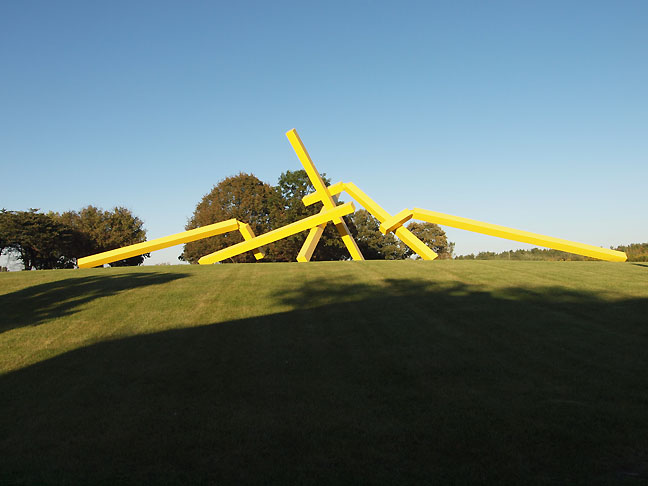
John Henry's Illinois Landscape No. 5 (1976) looks both like giant pile of ambiguous farm equipment waiting for assembly, big yellow telephone poles or perhaps a sly take on Christianity's role in taming the prairie since it has a Golgotha -like look? Obviously, not all modernism is deaf to its context and this late example seems to revel in its absurdity and is well placed.
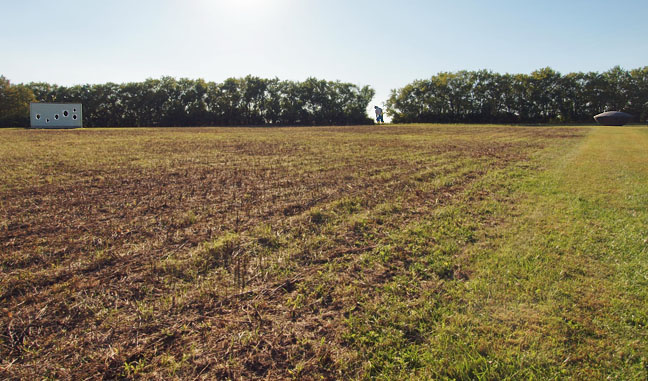
A trio of sculptures with interesting sight lines.
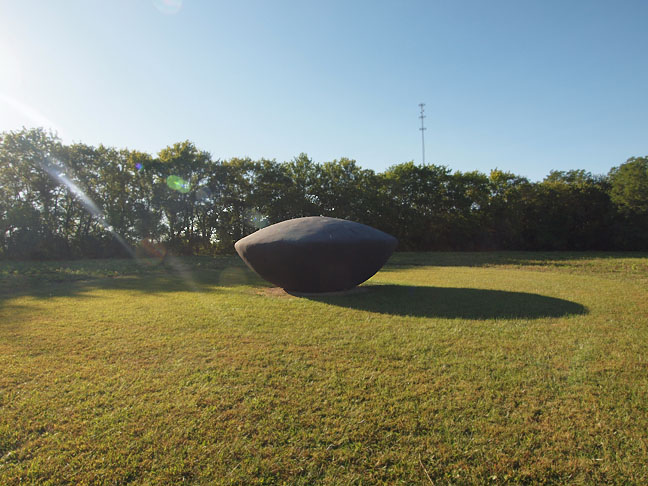
Flying Saucer (1977) by Jene Highstein has a great sense of mystery and humor. The Midwest is a bastion of normalcy, but in many ways that sets up an appetite for something more exotic. Art often looks alien to the Midwestern mindset but it is just another side of the same coin.
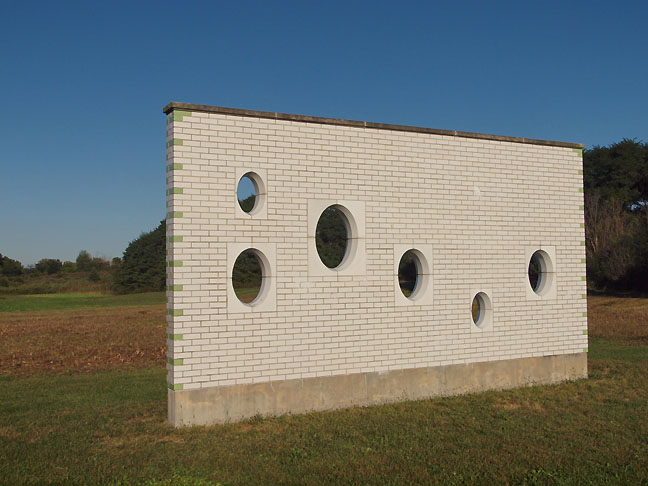
Frame (2005) by Richard Rezac, a PNCA alum that showed at the Portland Art Museum a few years back.
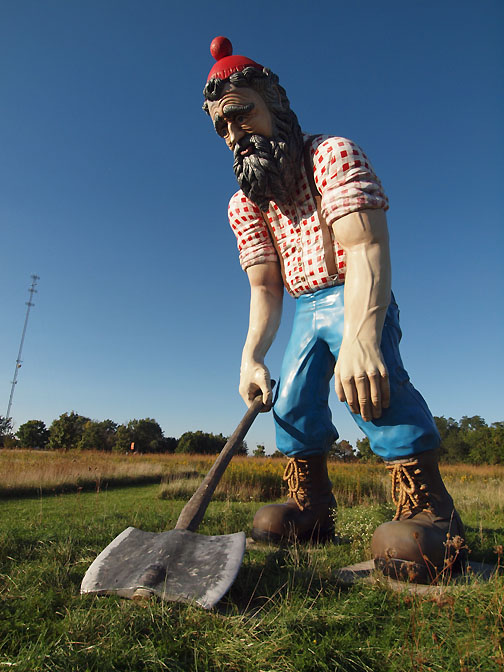
At the Manilow Sculpture Park Tony Tasset's weary and careworn Paul Bunyan sculpture, "Paul," seems to portray the giant lumberjack having a major existential crisis in the prairie. Not enough trees for a giant lumberjack, eh? What does this hipster guy with his hat topped with a red ball need? Will Paul take up farming, or perhaps politics?
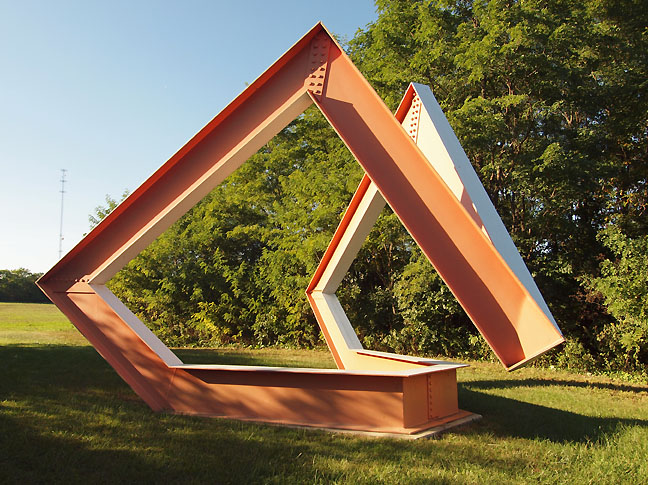
Phoenix (1968) by Edvins Strautmanis does have some of that high Modernist optimism. The collection also has works by Bruce Nauman and Mary Miss so it is balanced and the sweep of the collection does feel like it is tracking the issues of the age in which the work was initiated.
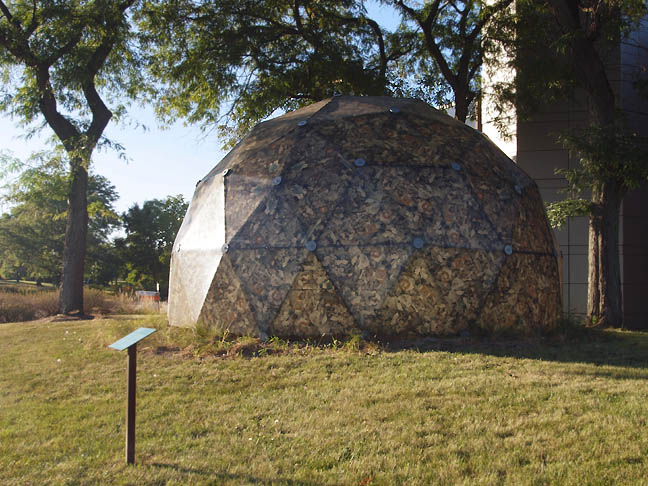
Working on the Failed Utopia (2006) by Christine Tarkowski wasn't the best realized work but there is something to be said for trolling Buckminster Fuller with garbage-like materials. Better siting that made this work seem like a landfill might have given it more of a charge but here it seems like an odd science experiment being sited nearby major buildings.
Elmhurst Art Museum
The Elmhurst Art Museum prides itself on being the suburban contemporary art museum for the Chicagoland area. That's a pretty interesting niche and having a Mies van der Rohe house as part of it automatically puts it on the map.
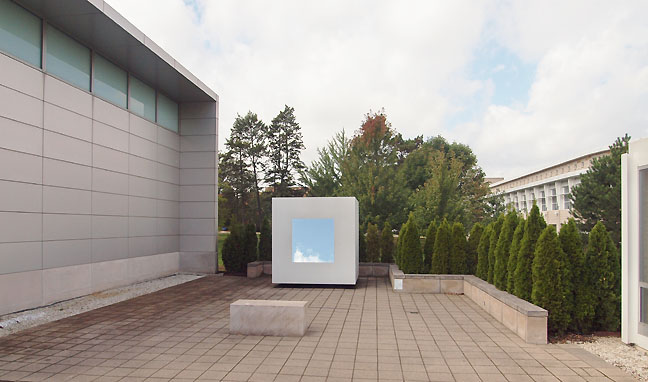
David Wallace Haskin's Skycube does a great job of bridging the Elmhurst Art Museum's main building with its Mies van der Rohe McCormick House, moved to the site and a more typical museum structure. Haskins Skycube is on permanent display but it also compliments his temporary Polarity exhibition in the two buildings adjacent. I like the idea of letting the art stitch together the crazy quilt museum experience with clouds and sky. Too often museum architecture tries to finish the sentences of the art but instead Art works better when it finishes architecture's sentences. Think of architecture as a plate or table setting and the art as the main course of a meal.
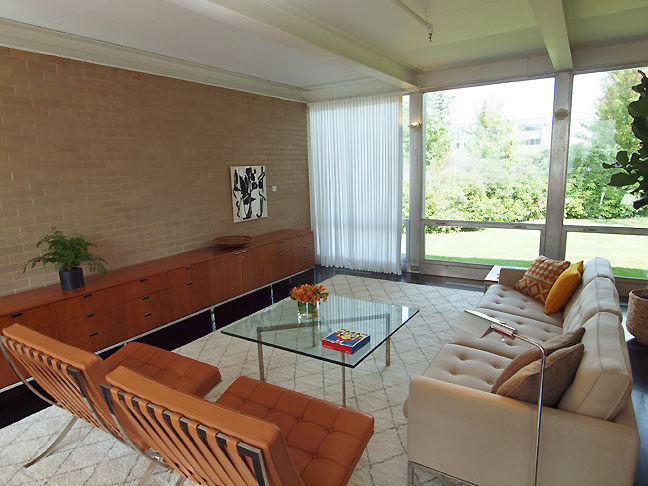
The McCormick house is one of only 3 single family domestic residences by Mies in the country so it is a major part of the EAM's identity and collection. The thing is the museum isnt really a Mies museum. Instead, it is a contemporary art museum so architecture fans seeking a pristine Mies experience will be confounded. That said the exhibition McCormick House: 1952 – 1959 curated by Robert Kleinschmidt and Ryan Monteleagre reifies half of the McCormick House with classic 1950s furniture inspired by historical photographs of the residence of Robert Hall McCormick III and Isabella Gardner. Contemporary works by Michelle Grabner etc. recall high modernism too but really the furniture is more interesting since pantomiming modernism is kinda like being a prop comic. One thing that was great about this show is the way it really gave a sense of the McCormick house as a residency separated from nature only by glass. The very busy squirrels outside the ample windows constantly upstaged the art on the walls, while the furniture held its own as a presence. In some ways the McCormick House eats paintings or at least mollifies them so I suspect more 3d art might fare better?
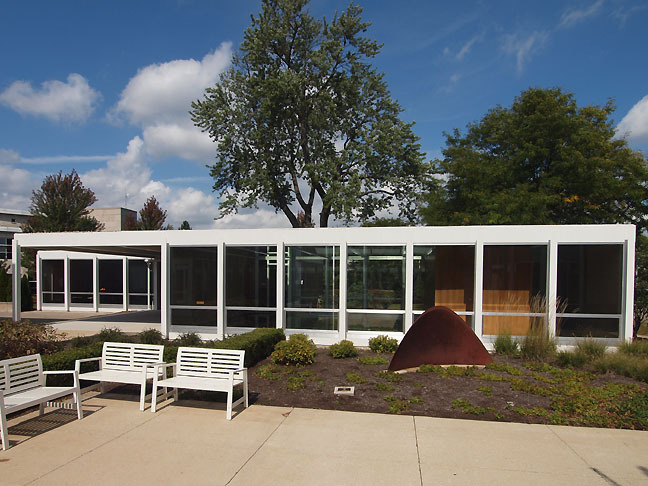
I am a fan of non neutral art spaces and the McCormick house offers a unique environment that will make visiting this museum next time I'm in the area something I look forward to.
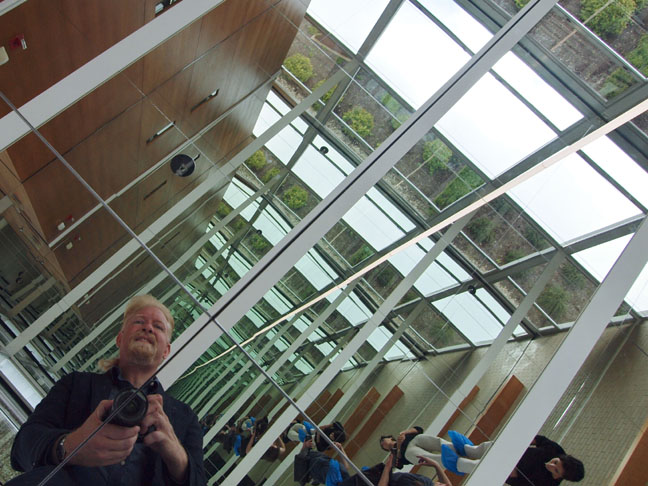
Haskin's Polarity exhibition turns half of the McCormick house into a Mies skyscraper space via mirrors. The vertigo is challenging for some but I loved how this essentially translates Mies design language into something so unexpected yet archetypal... as if to give the Mies traditionalists all the Mies they can handle and then some. I love how artists and institutions in Chicago constantly remark upon their valedictorian cultural figures like Mies. Portland needs to learn how to acknowledge and tell its own stories in this way more (Rothko, Belluschi, Elliot Smith, James Beard). My family's own history is tied up with Mies' move to Chicago from Germany so I'm sensitive to this.
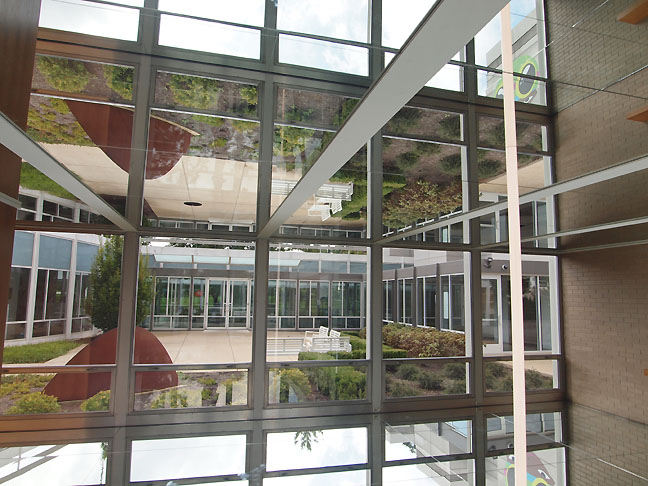
More of Polarity with architectural context at EAM.
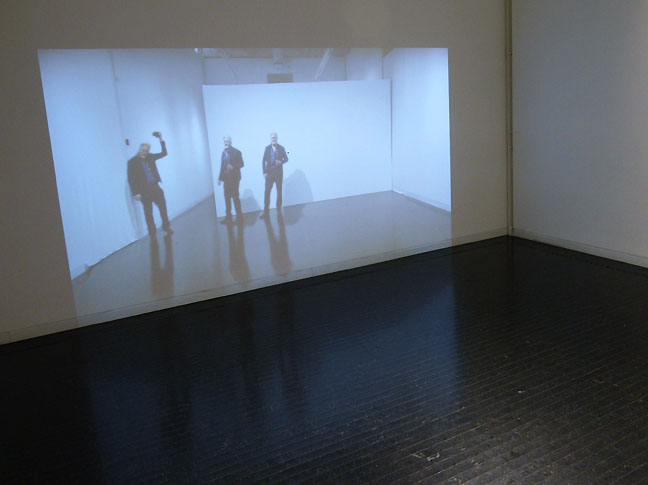
In the Main museum Haskin's Polarity exhibition really shifts context.
Northeastern Illinois University
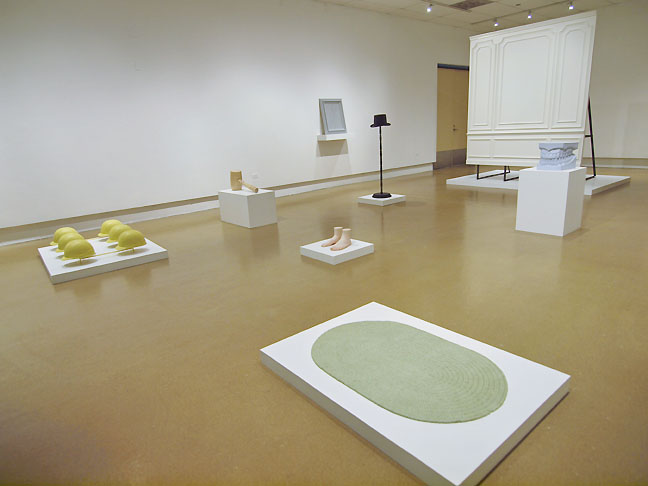
Portland's own Erik Geschke had a solo exhibition at Northeastern Illinois University's gallery. Mixing Geschke's wry neodada with a campus with so much high modernist architecture felt like the artist was giving the students some room to question the world around them. It was a good show and hopefully people in the pacific northwest get to see it eventually.
Arts Club of Chicago
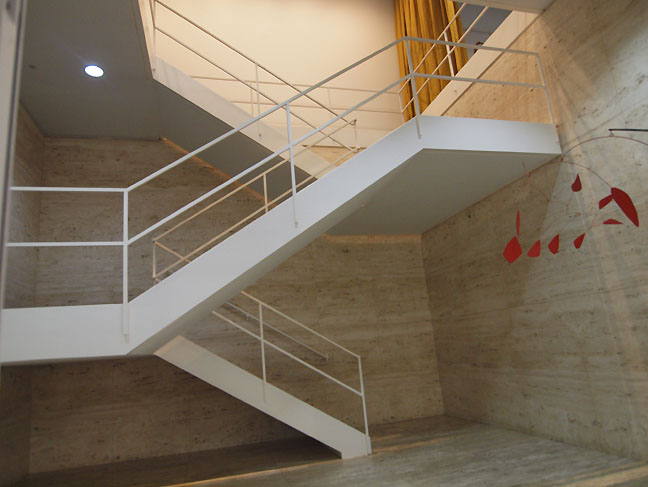
A major reason that Chicago is a serious arts town is the Arts Club of Chicago. It is a private membership based social club but it has a major collection, including this Mies van der Rohe staircase (with a Calder sneaking in there). Restored and reinstalled from its original location in the arts club's previous home the staircase's existence is owed to the architects of the new space Vinci Hamp, who also happen to be the designers for The Portland Art Museum's upcoming Rothko Pavilion expansion and renovation. Thanks to Phil Hamp for giving us a personal tour.
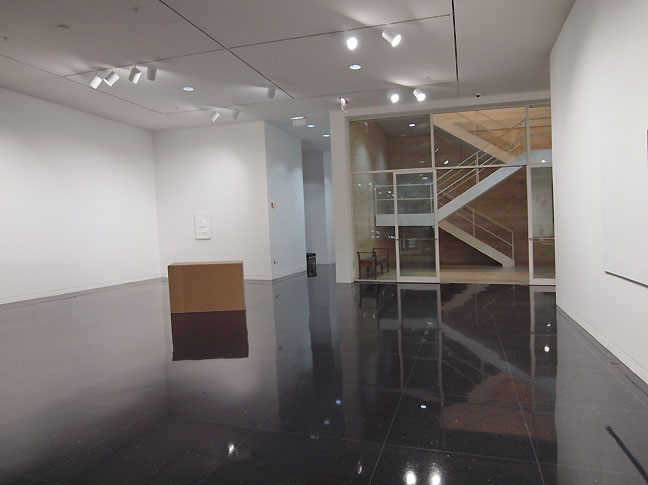
Entry lobby of the Arts Club of Chicago
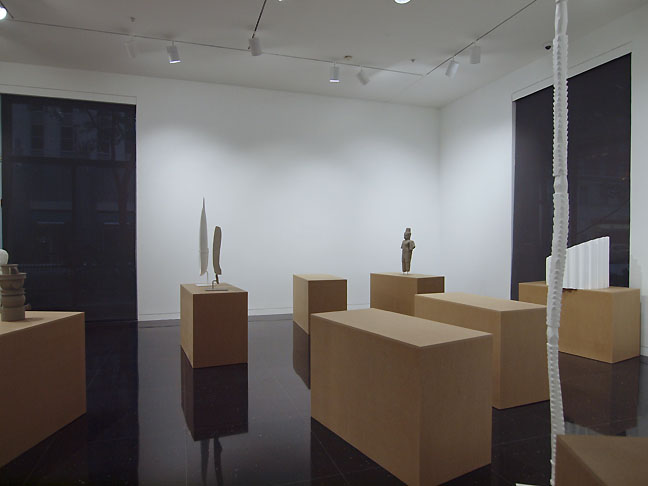
Gaylen Gerber's exhibition Supports at the Arts Club of Chicago was a wry look at the way plinths can cue objects collectively. Here in the main galleries it looks like the exhibition has been swept into a storage space... amusing and interesting, its the sort of art about art show that plays well in an arts club.
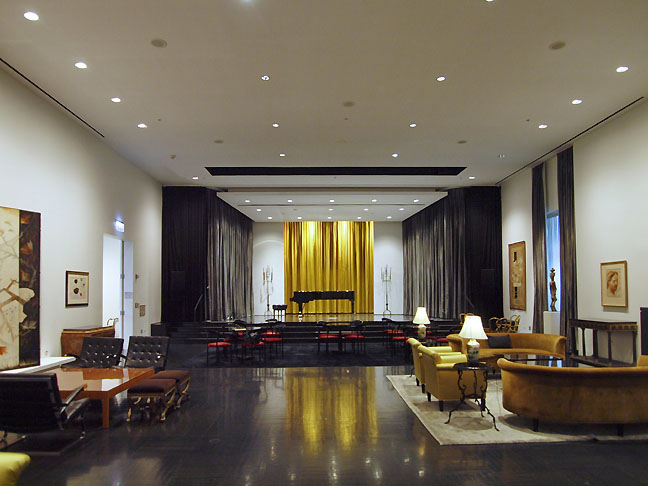
Excellent concert hall space at Arts Club of Chicago
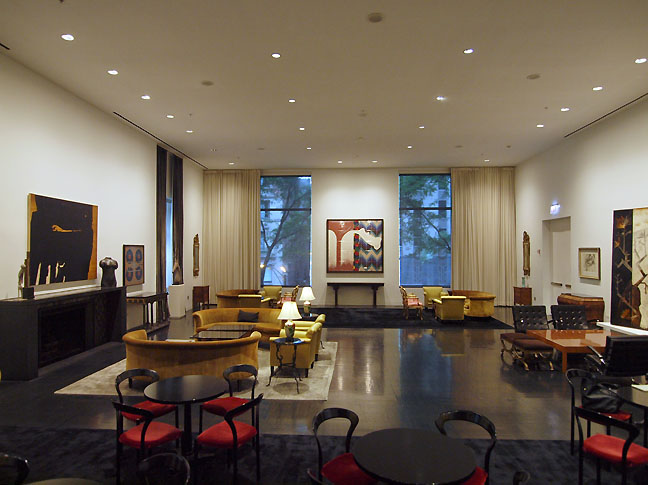
Main hall of the Arts Club of Chicago is filled with excellent art like the Sigmar Polke in the back center of the room. Much of the furniture is either restored furniture from the previous location or like the Mies chairs at right are special reproductions.
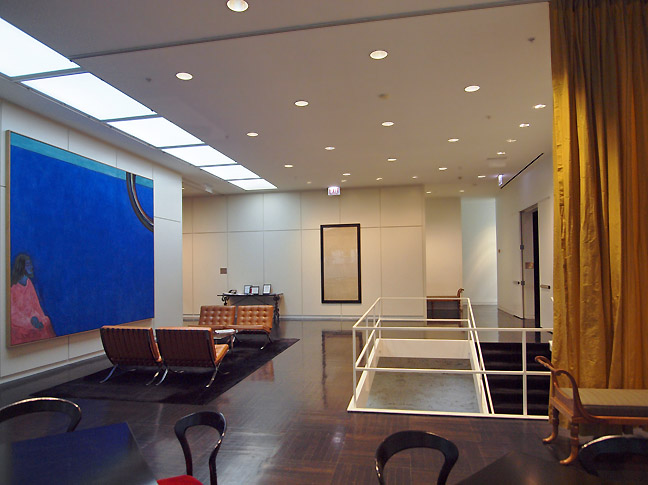
Peter Doig at the top of the staircase
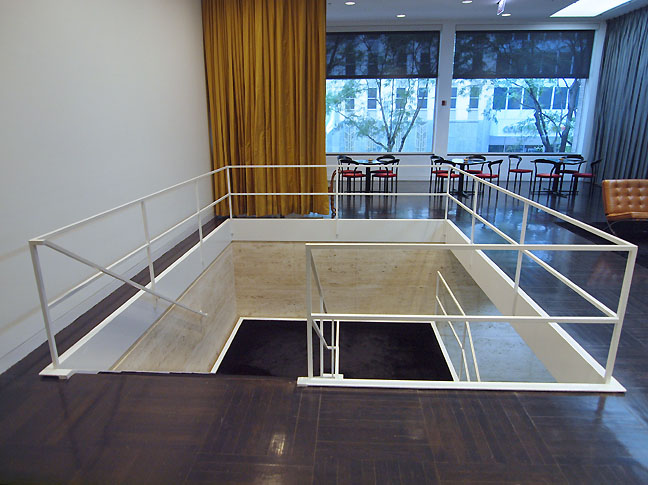
Top of the Mies stairs at the Arts Club of Chicago.
Graham Foundation
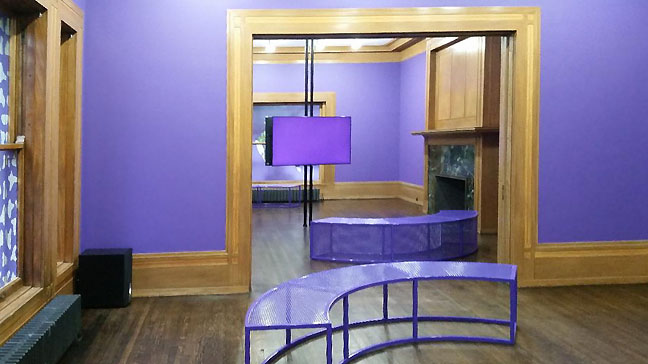
The Graham Foundation explores the intersection of architecture with other cultural disciplines like art, music, dance and film etc. I was most impressed with these spaces also renovated by architects Vinci Hamp. Phil Hamp suggested we had to go there right after our visit to the Arts Club and he could not have been more right. Since I'm an architecture fiend I fully appreciated the non neutral gallery spaces with their stately fire places and Martine Syms exhibition Incense, Sweaters and Ice was the strongest solo show I saw in Chicago during the visit. It engaged every inch of the room and the the art behaved like an occupant, not just objects.
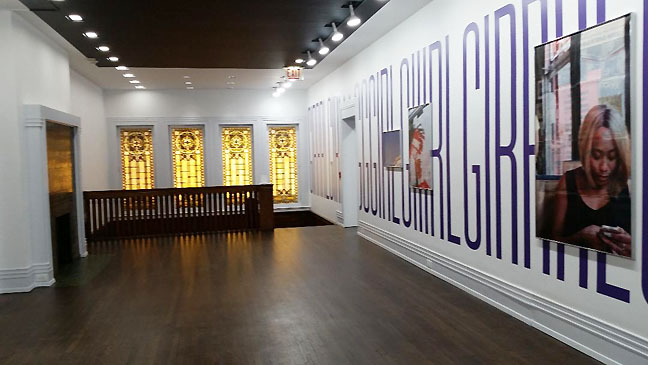
More Martine Syms at Graham Foundation
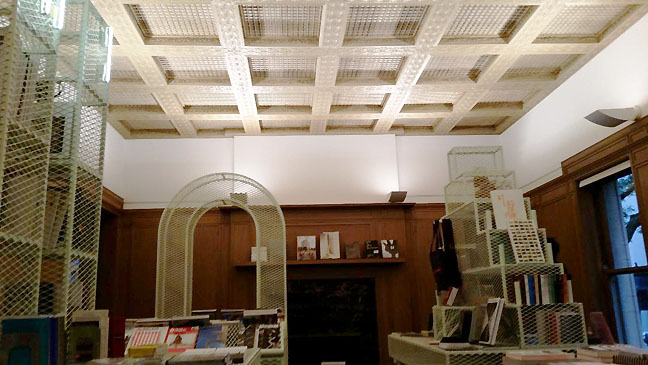
The Graham Foundation's bookshop was also fantastic with nonstandard displays by designer Ania Jaworska. The effect was like a jungle gym for literature... hey books need to crosstrain too!
Expo Chicago
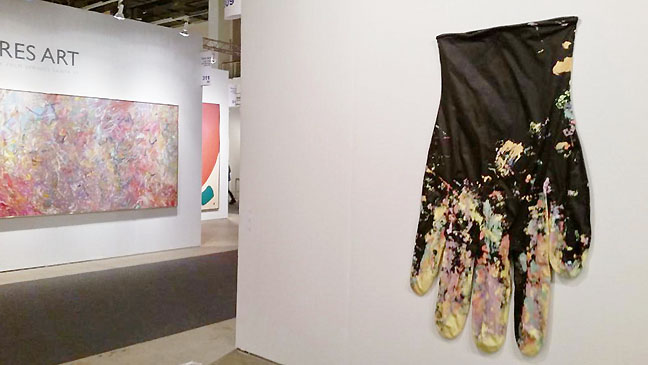 Ok perhaps an art fair like Expo Chicago isnt that off the beaten path but it is still the only art fair I know of that takes place in Lake Michigan. I really like the Amanda Ross-Ho black gloves at Praz Delavallde Gallery.
Ok perhaps an art fair like Expo Chicago isnt that off the beaten path but it is still the only art fair I know of that takes place in Lake Michigan. I really like the Amanda Ross-Ho black gloves at Praz Delavallde Gallery.
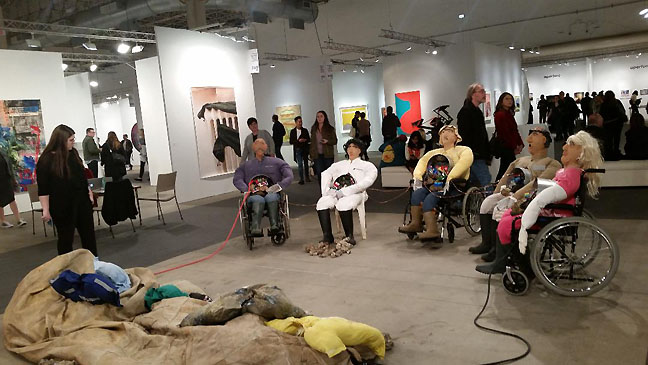
Somehow these art installations at an art fair dont hit their marks.
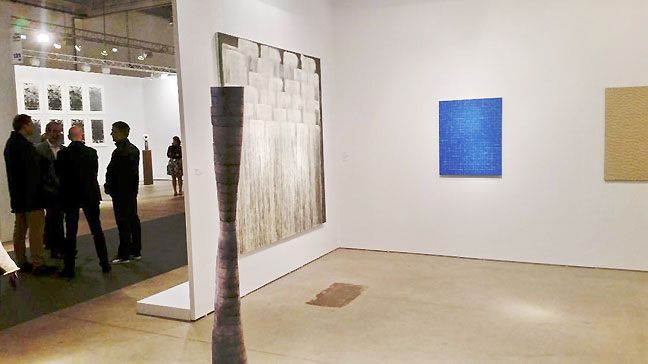
I liked the poise of Levy Gorvy's booth with Pat Steir etc.
Chicago Gallery Hopping
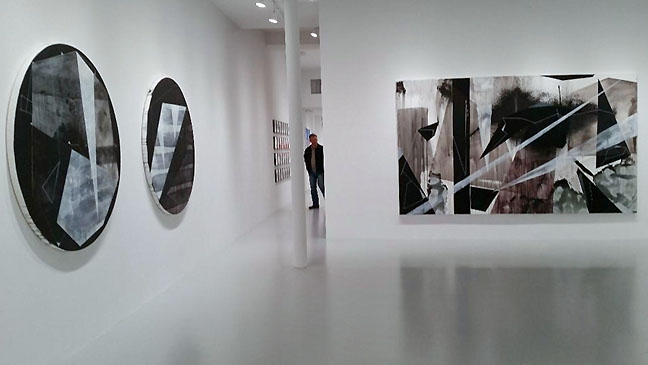
Chicago's Bellwether Rhona Hoffman Gallery has moved recently and I appreciated this new space and neighborhood. It all felt a little bit more on edge. I suppose I am old fashioned in that I feel a neighborhood does effect the feel and community of a gallery. Torkwase Dyson's work on display had energy and it enlivened the space around it. The effect was good vibes for my first visit to the new space.
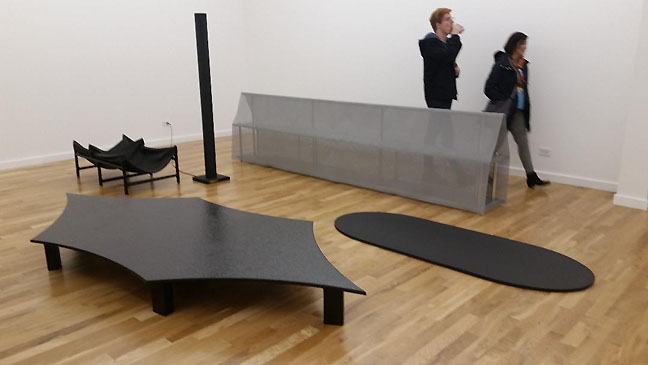
Because when Rhona Hoffman moves it means other galleries can move there too... Volume gallery's show of Johnathan Meucke's functional pieces was memorable. I like objects that dont sit comfortably with a genre and these also looked like low res video game graphics rendered in real life, appealing tpo the geek in me.
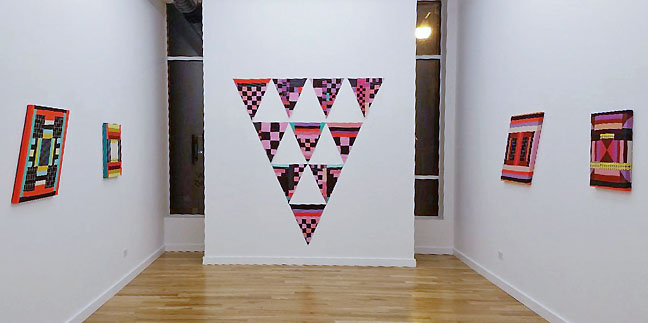
In the same building as Volume, Western Exhibitions Paolo Arao's Night Throbs was a strong 2d offering that felt more 3d, considering its vigor.
Frank Lloyd Art Dealer
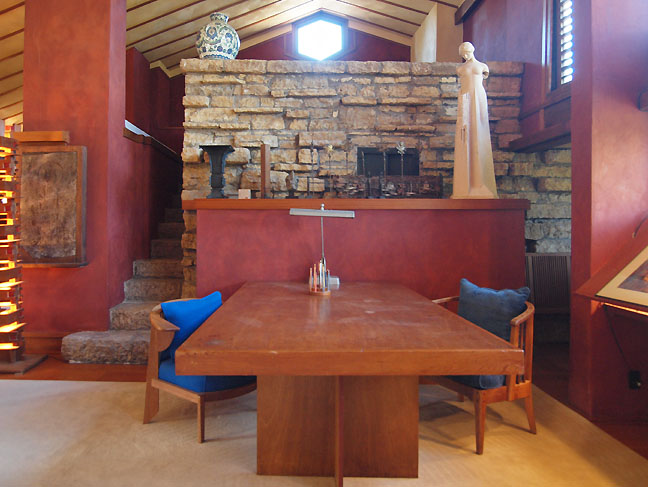
Last but never least Many are surprized that Frank Lloyd Wright was an art dealer and this his office at his home Taliesin East showed his great taste... you know, just casually display the Ming vase up there above the desk. He actually made money at selling art... yeah that's taking the initiative.














































 Ok perhaps an art fair like Expo Chicago isnt that off the beaten path but it is still the only art fair I know of that takes place in Lake Michigan. I really like the Amanda Ross-Ho black gloves at Praz Delavallde Gallery.
Ok perhaps an art fair like Expo Chicago isnt that off the beaten path but it is still the only art fair I know of that takes place in Lake Michigan. I really like the Amanda Ross-Ho black gloves at Praz Delavallde Gallery.




